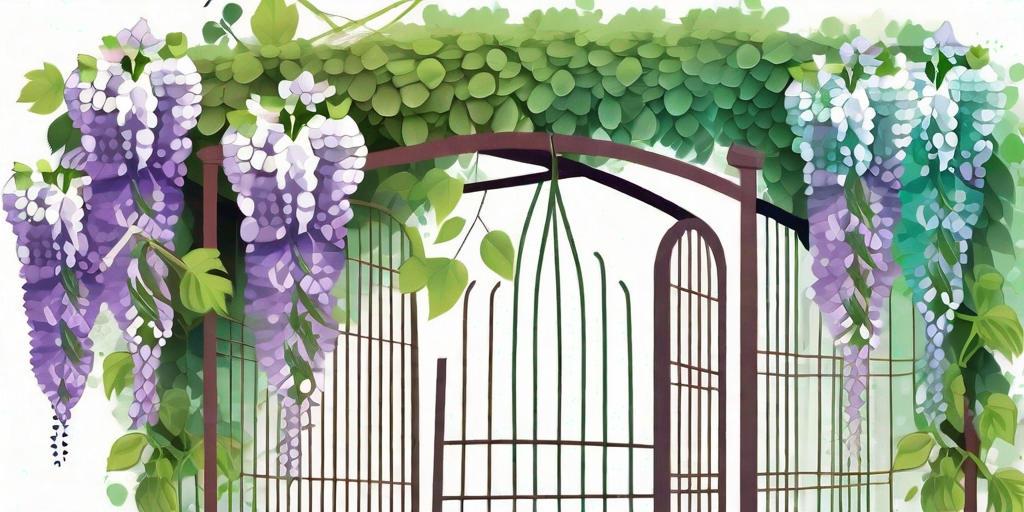
Are you ready to embark on a botanical journey that will transform your garden into a purple paradise? If so, then the enchanting world of wisteria is waiting for you. These climbing beauties are known for their cascading flowers and sweet scent, making them a favorite among garden enthusiasts. But before you start digging, let's dive into the nitty-gritty of planting wisteria seeds.
Understanding Wisteria
Wisteria is a genus of flowering plants in the legume family, Fabaceae. They are native to the eastern United States, China, Korea, and Japan. Wisteria plants are known for their stunning, fragrant flowers that often hang in graceful clusters. They are a hardy bunch and can live for many years, with some even reaching the ripe old age of one hundred!
But don't be fooled by their beauty. Wisteria plants are like the rebellious teenagers of the plant world. They can be stubborn, unruly, and if left unchecked, can take over your garden. But with the right care and attention, they can be tamed into a beautiful addition to your outdoor space.
Planting Wisteria Seeds: The Step-by-Step Guide
Now that we've got the introductions out of the way, let's get down to business. Planting wisteria seeds may seem like a daunting task, but with a little patience and a lot of love, you'll be rewarded with a blooming success story.
Here's a step-by-step guide to help you on your journey:
- Choose Your Seeds: Not all wisteria seeds are created equal. Look for seeds from a reputable source to ensure they are healthy and viable.
- Prepare Your Seeds: Wisteria seeds have a hard outer shell that needs to be softened before planting. Soak the seeds in warm water for 24 hours to help break down the shell.
- Plant Your Seeds: Plant the seeds in a pot filled with well-draining soil. Cover the seeds with about half an inch of soil and water thoroughly.
- Wait for Germination: Patience is key here. Wisteria seeds can take anywhere from two weeks to a month to germinate. Keep the soil moist but not waterlogged.
- Transplant the Seedlings: Once the seedlings have a couple of sets of leaves, they are ready to be transplanted into your garden. Choose a sunny spot with well-draining soil.
Caring for Your Wisteria
Planting the seeds is just the beginning. Wisteria plants require regular care to ensure they grow healthy and strong. Here are a few tips to help you along the way:
- Watering: Wisteria plants like their soil to be moist but not waterlogged. Water regularly, especially during dry periods.
- Feeding: Feed your wisteria with a high-potash fertilizer in spring to encourage flowering.
- Pruning: Wisteria plants can become unruly if not pruned regularly. Prune in late winter to encourage flowering and again in summer to control growth.
Common Wisteria Problems and Solutions
Like any plant, wisteria can encounter a few bumps along the road. But don't worry, most problems can be easily solved with a little know-how.
Here are a few common issues and their solutions:
- Not Flowering: If your wisteria is not flowering, it may be due to a lack of sunlight or nutrients. Make sure your plant is getting plenty of sun and feed it with a high-potash fertilizer.
- Yellow Leaves: Yellow leaves can be a sign of overwatering. Make sure your wisteria's soil is well-draining and avoid waterlogging.
- Pests: Wisteria can be susceptible to pests like aphids and scale. Treat any infestations with a suitable insecticide.
Frequently Asked Questions
How long does it take for wisteria seeds to germinate?
Wisteria seeds can take anywhere from two weeks to a month to germinate. Patience is key!
Why is my wisteria not flowering?
If your wisteria is not flowering, it may be due to a lack of sunlight or nutrients. Make sure your plant is getting plenty of sun and feed it with a high-potash fertilizer.
Can wisteria be grown in pots?
Yes, wisteria can be grown in pots. However, they will need a large pot and regular pruning to keep their growth in check.
Conclusion
Planting wisteria seeds can be a rewarding experience. With a little patience and care, you can transform your garden into a blooming success story. So why wait? Start your wisteria journey today!
Remember, every great gardener started with a single seed. And who knows, you might just find that you have a green thumb after all!















